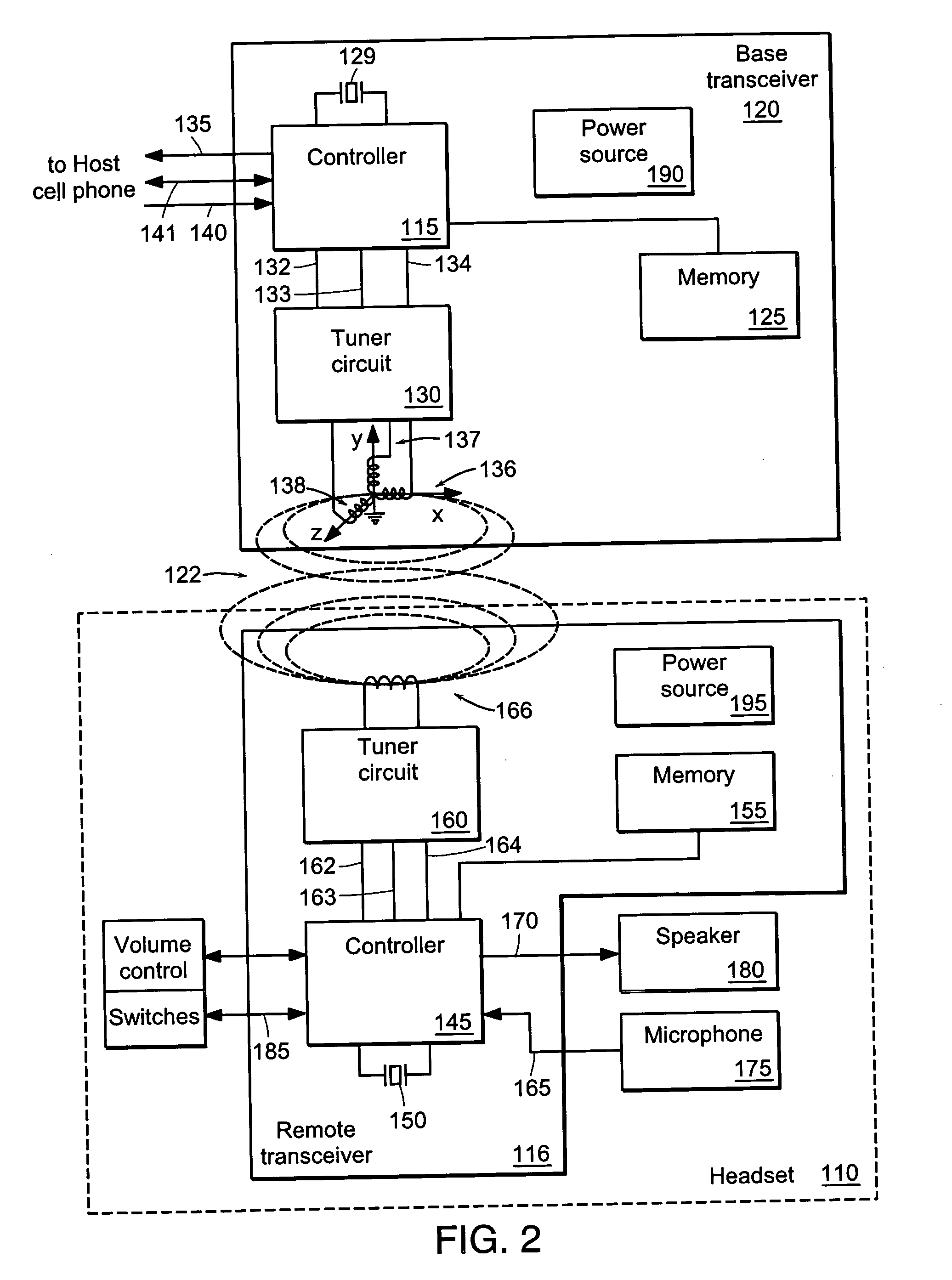Techniques for inductive communication systems
a communication system and inductive technology, applied in the field of inductive communication system techniques, can solve problems such as annoyance or even detrimental effects
- Summary
- Abstract
- Description
- Claims
- Application Information
AI Technical Summary
Benefits of technology
Problems solved by technology
Method used
Image
Examples
Embodiment Construction
[0049] A description of preferred embodiments of the invention follows.
[0050]FIG. 1 is a pictorial diagram of a wireless communication system according to certain principles of the present invention. As shown, wireless communication system 100 includes cellular phone device 130 and headset 110. Generally, headset 110 is worn by a user to communicate with a remote party over one or multiple wireless links. For example, inductive link 122 supports communications between a user wearing headset 110 and cell phone 130. Radio Frequency (RF) link 127 supports communications between cell phone 130 and cellular base station 125. Base station 125 is coupled to network 129 such as a PSTN (Public Switching Telephone Network).
[0051] Instead of holding cell phone 130 to one=s ear as is ordinarily done to communicate over a telephone with a remote party, a user wearing headset 110 can communicate with the party using headset 110. For example, a user can speak into microphone 112 to convey a voic...
PUM
 Login to View More
Login to View More Abstract
Description
Claims
Application Information
 Login to View More
Login to View More - R&D
- Intellectual Property
- Life Sciences
- Materials
- Tech Scout
- Unparalleled Data Quality
- Higher Quality Content
- 60% Fewer Hallucinations
Browse by: Latest US Patents, China's latest patents, Technical Efficacy Thesaurus, Application Domain, Technology Topic, Popular Technical Reports.
© 2025 PatSnap. All rights reserved.Legal|Privacy policy|Modern Slavery Act Transparency Statement|Sitemap|About US| Contact US: help@patsnap.com



